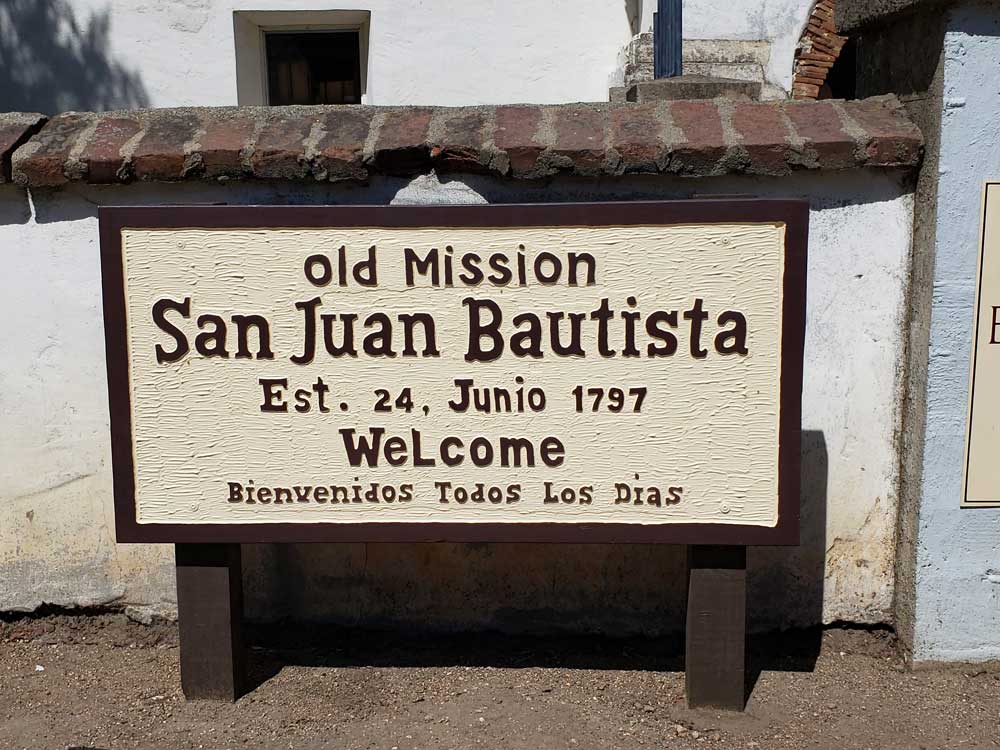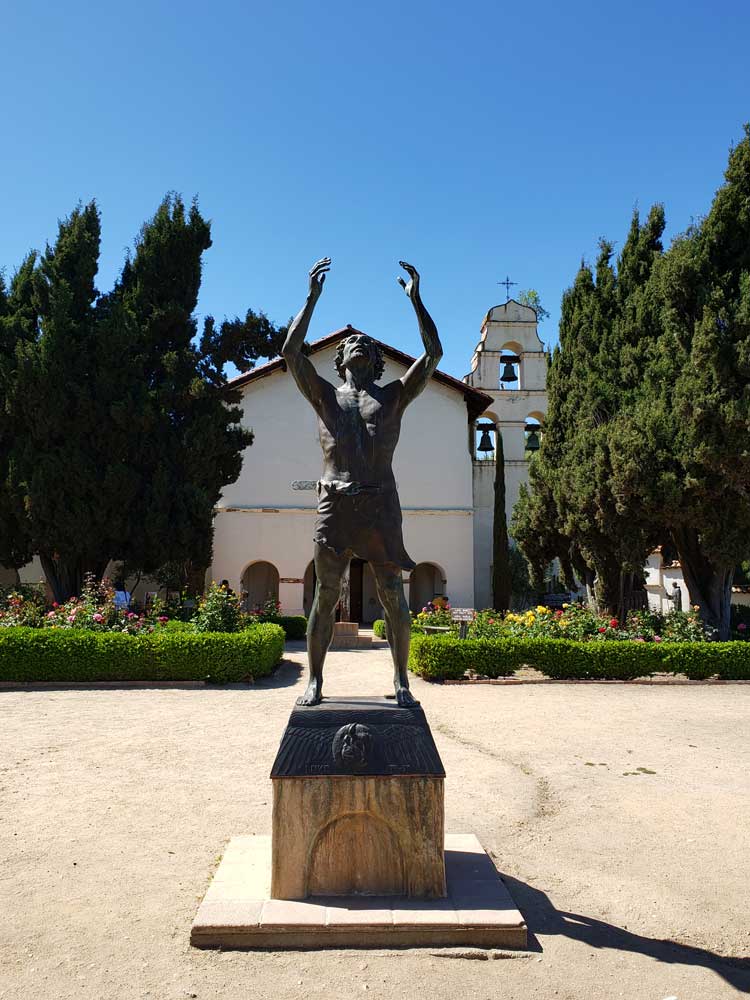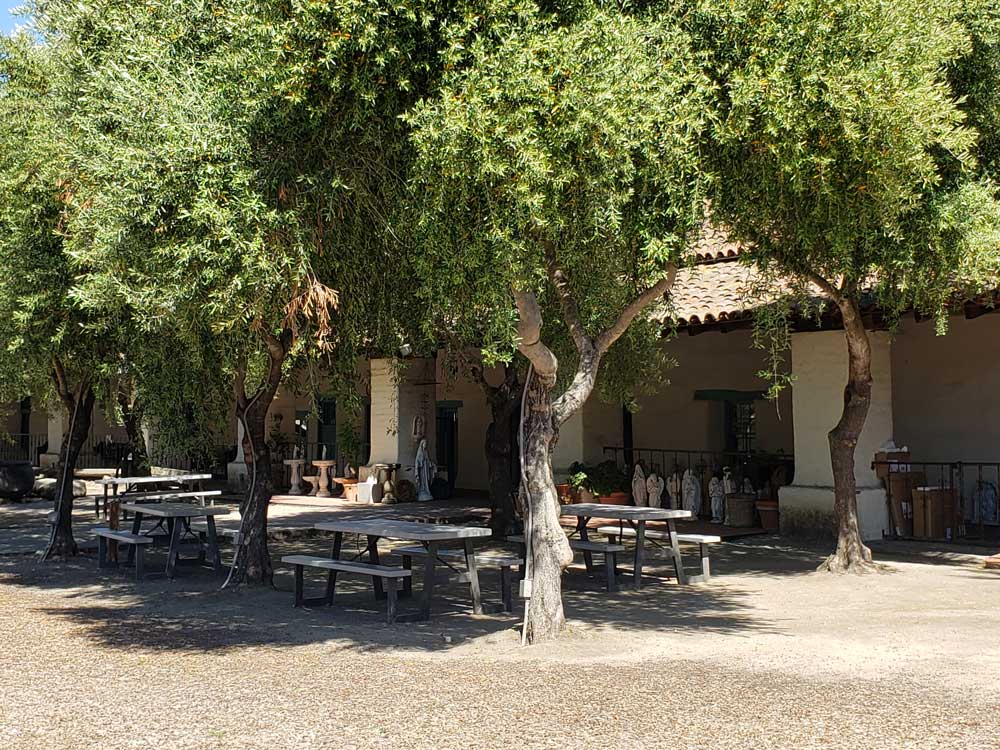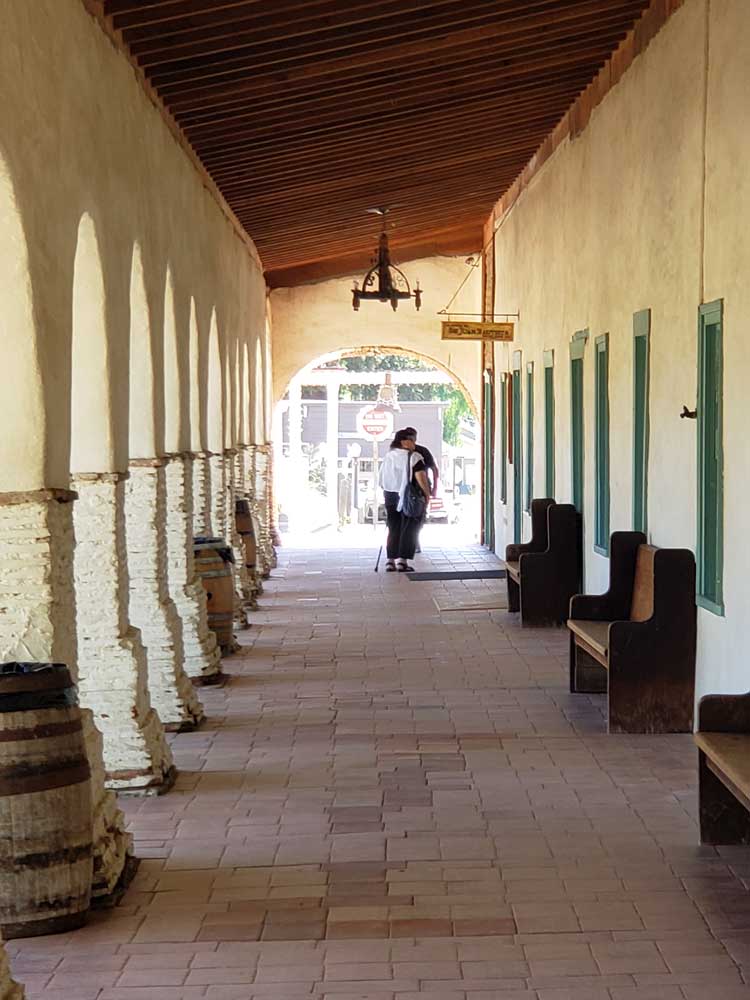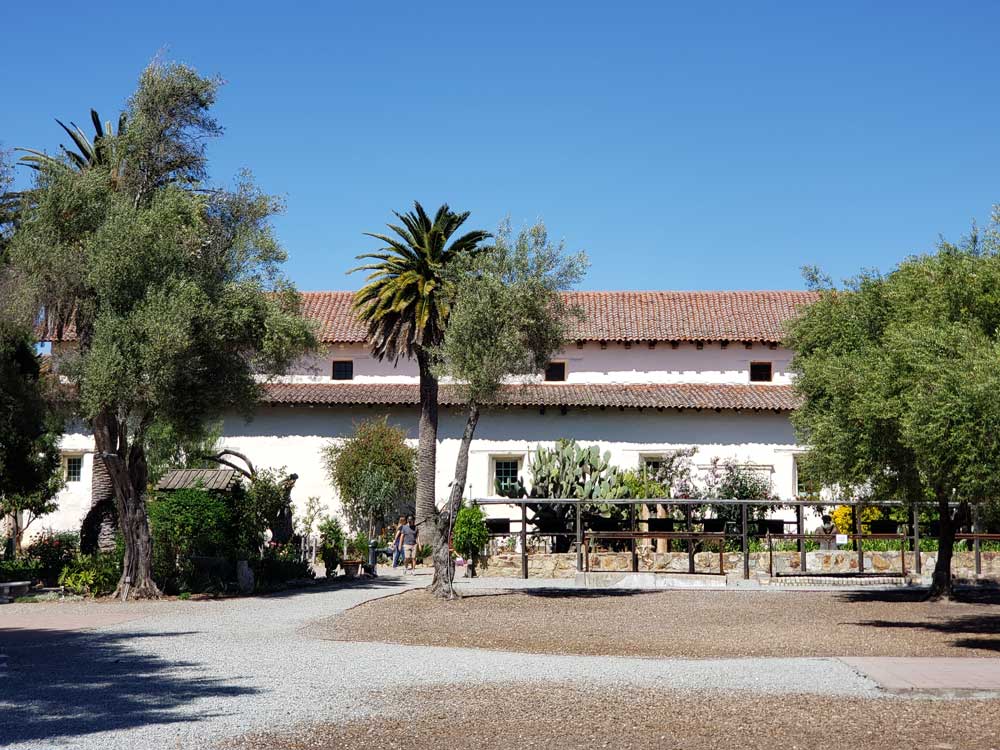Mission has served mass daily since 1797, and today functions as a parish church of the Diocese of Monterey
-Except for the days listed below when the Gift Shop & Mission Tours Will be closed:
January 1st, Day before Thanksgiving, Thanksgiving Day, December 24th, December 25th, and December 31st.
From Salinas (20 miles): Get on US-101 N from N Main St. Follow US-101 N to CA-156 E in San Benito County. Take exit 345 from US-101 N. Continue on CA-156 E.
Overview
Mission San Juan Bautista is a Spanish mission in San Juan Bautista, California. Founded on June 24, 1797 by Fermín Lasuén of the Franciscan order, the mission was the fifteenth of the Spanish missions established in present-day California. Named for Saint John the Baptist, the mission is the namesake of the city of San Juan Bautista.
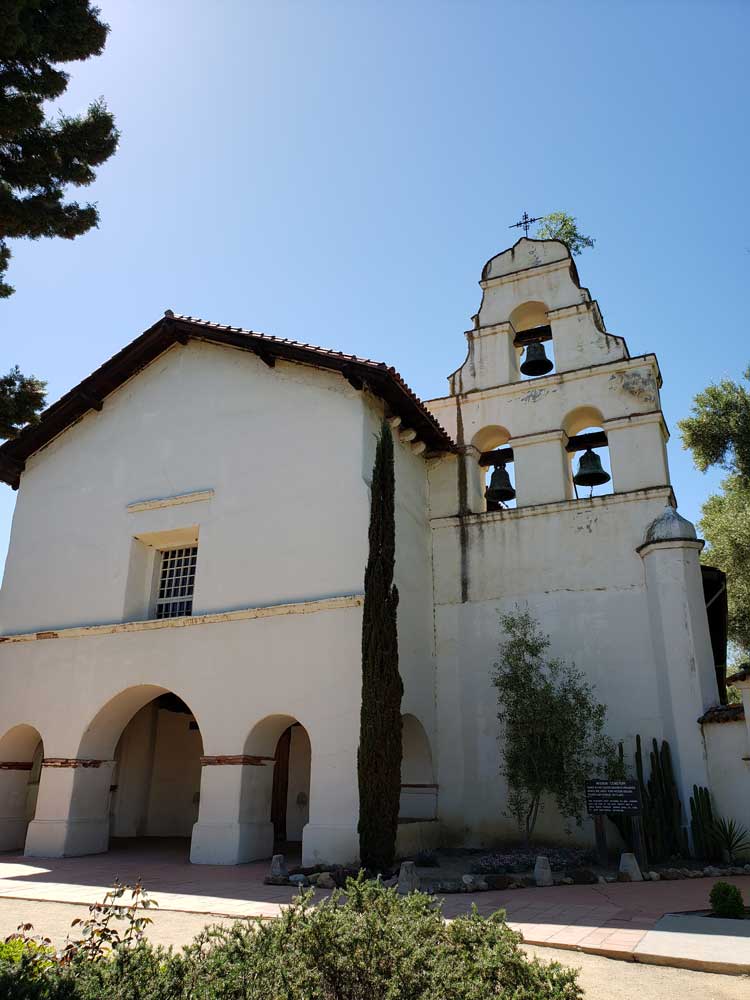
Barracks for the soldiers, a nunnery, the Jose Castro House, and other buildings were constructed around a large grassy plaza in front of the church and can be seen today in their original form. The Ohlone, the original residents of the valley, were brought to live at the mission and baptized, followed by Yokuts from the Central Valley. Mission San Juan Bautista has served mass daily since 1797, and today functions as a parish church of the Diocese of Monterey.
History
Father Pedro Estévan Tápis (who had a special talent for music) joined Father Felipe Arroyo de la Cuesta, at Mission San Juan Bautista in 1815 to teach singing to the Native Americans. He employed a system of notation developed in Spain that uses varied colors or textures for polyphonic music, usually (from bottom to top) solid black, solid red, black outline (sometimes solid yellow) and red outline (or black outline when yellow was used). His choir of Native American boys performed for many visitors, earning the San Juan Bautista Mission the nickname "the Mission of Music." Two of his handwritten choir books are preserved at the San Juan Bautista Museum. When Father Tapis died in 1825 he was buried on the mission grounds. The town of San Juan Bautista, which grew up around the mission, expanded rapidly during the California Gold Rush and continues to be a thriving community today.

History
The mission is situated adjacent to the San Andreas Fault, and has suffered damage from numerous earthquakes, such as those of 1800 and 1906. However, the mission was never entirely destroyed at once. It was restored initially in 1884, and then again in 1949 with funding from the Hearst Foundation. The three-bell campanario, or "bell wall," located by the church entrance, was fully restored in 2010. The mission includes a cemetery, with the remains of over 4,000 Native American converts and Europeans buried there. The mission and its grounds were featured prominently in the 1958 Alfred Hitchcock film Vertigo.
This article uses material from the Wikipedia article "Mission San Juan Bautista", which is released under the Creative Commons Attribution-Share-Alike License 3.0.
